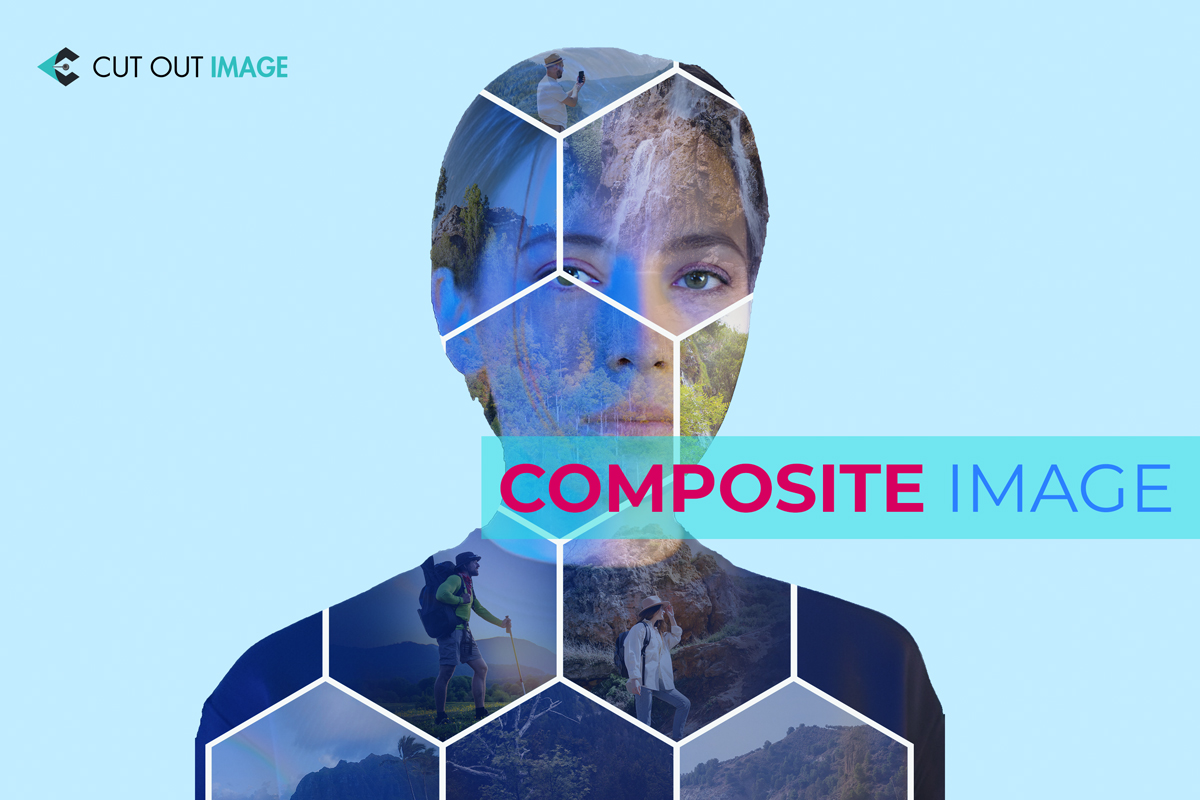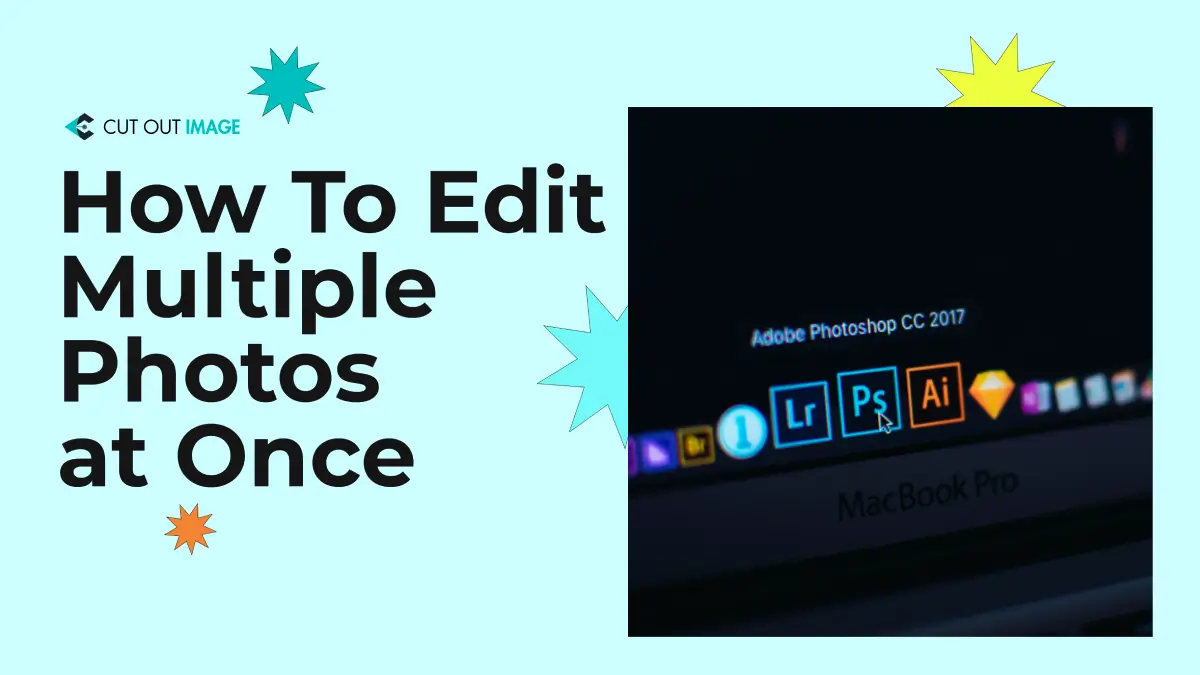Disclaimer: This blog is for general informational and inspirational purposes only, based on publicly available information and personal insights. Images—whether of models, screenshots, or products—are for illustrative purposes only and do not depict actual subjects, scenarios, or views described. We do not intend to offend or conflict with any societal, cultural, religious, or political values.
While skimming through your Instagram feed, did it ever happen that an unexpected picture like “a man’s face dissolving into nature” hooks your attention? Such a compelling photo is known as a Composite Image, which looks real but fake. You see such images daily in website ads, magazines, and social platforms.
Is the term ‘Composite Image’ new to you? Do you want to create and upload composite photos on your social profile?
You have anchored on the right page if your answer is ‘Yes’ to the above questions! In this blog, I will debate Composite Image and show you how to create Composite Images using different software and apps. Moreover, I will share a few attractive inspirations to assemble your imagination. So, let’s start the journey!
What is a Composite Image?
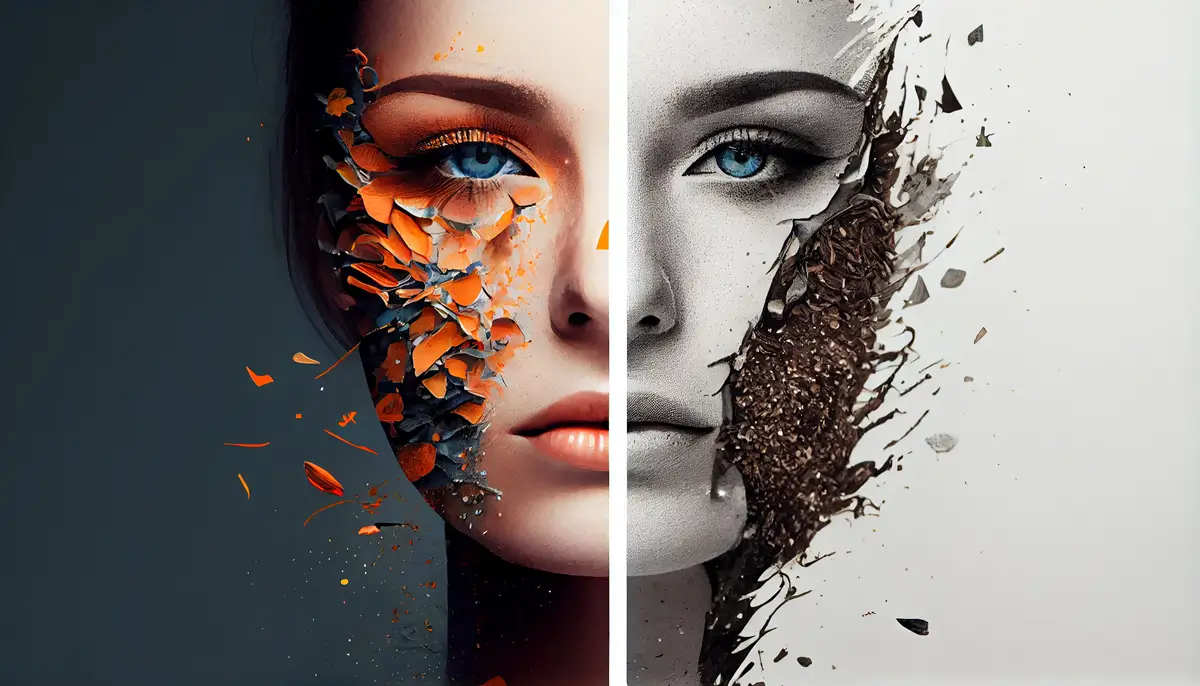 This image is used solely for illustrative purposes. We do not intend to offend or conflict with any societal, cultural, religious, or political values. Image Source: Freepik
This image is used solely for illustrative purposes. We do not intend to offend or conflict with any societal, cultural, religious, or political values. Image Source: Freepik
Composite Image combines graphical elements from different sources and creates flawless real-like single images. Composite Photo’s elements are fine art, dreamlike, and storyteller, which lets the artist design something impossible. It brings life to dreams and reality to fantasy.
“It’s about planning well, collecting materials and bringing everything together. If you have a good idea and plan, it’s a straightforward process – the only limits are those you put on your creativity”.- Erik Johansson.
‘Composite Image’ might sound unfamiliar, but we see composite images daily. Almost all commercial photos are examples of composite photos found in magazines, billboards, websites, social media, etc. The most famous example is the photo of President Abraham Lincoln, where the head was placed on another person’s body. Surprisingly it was so believable that it existed unrecognized for decades.
Many still believe Composite Images and Composite Photography are the same, but some differences remain. Composite Photography is just combining multiple photos to generate a new image. In contrast, Composite Image means creating a flawless picture by blending picture elements from different images.
Today’s buzzword, ‘Composite Image,’ is not the result of digital Photography. Composite Photography was applied more than a hundred years ago using double exposure and photomontage. Louis Daguerre already utilized various layering strategies to create composites. Henry Peach Robinson blended multiple negatives to form a seamless visual in the 19th century.
Today, with technological advancement, artists can create composite images utilizing double exposures and additional design methods within a few clicks. Today there are multiple apps and software available for them to generate amazing Composite Images. Among them, Photoshop has changed the composition-generating process dramatically.
Different Effects of Composite Image
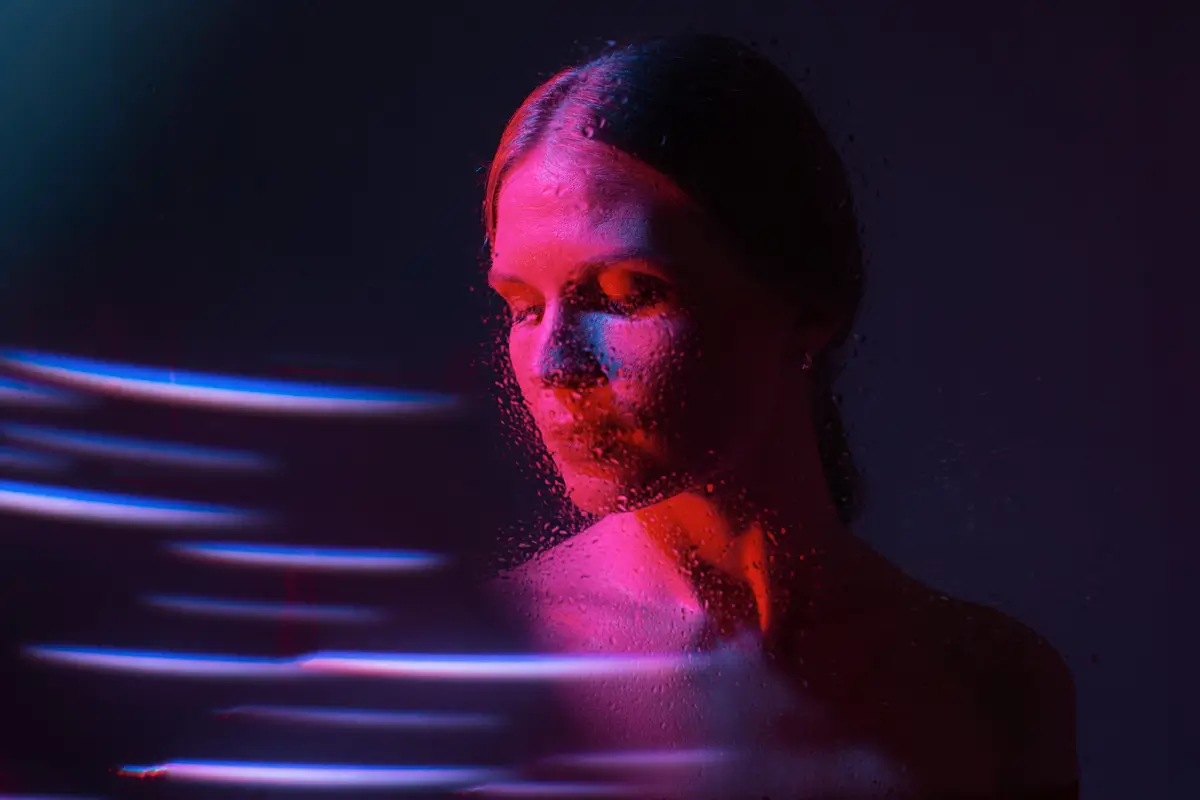
A composite photo resembles Image Manipulation, where the artist intentionally changes the photo element. From photography inventions until now, artists worldwide have given a tryout with composite images. They try to create different magical yet realistic composite effects using post-processing tools. Here are a few effects created for Composite Image-
Realism Effect: Though the composite images are dreamlike, the artist can create a completely believable photo by employing the Realism effect via different techniques. For example, an artist can composite an image placing people together though they were never present in the photo shoot.
This effect is also called a Deceptive composite since it misleads viewers with fake news. Deceptive composite images are very common on the internet to skew reality though an ethical line is drawn between captured and composite images.
Helpful Link: Do you need an Image Manipulation Service? Knock the expert Cut Out Image.
Fantasy Effect: Artists often construct Composite Images with fantasy effects by placing elements in a magical or surreal environment. This effect intentionally illustrates something unreal but doesn’t aim to deceive like the Realism Effect.
Motion Effect: With motion effect, the composite Image displays a subject’s multiple movements in a single frame. An example of such an effect composite image is the photo breaking down of a gymnast’s multiple movements. Such effects are mostly used in sports photography for gymnasts or players of the high jump, diving, tracking etc.
Storytelling Effect: Composite images are compelling story narrators since all the photo elements depict the story. Movie posters are examples of composite images with storytelling effects since they mix multiple pieces of a movie’s story into one frame.
Composite Image Guide: How to Create Composite Images
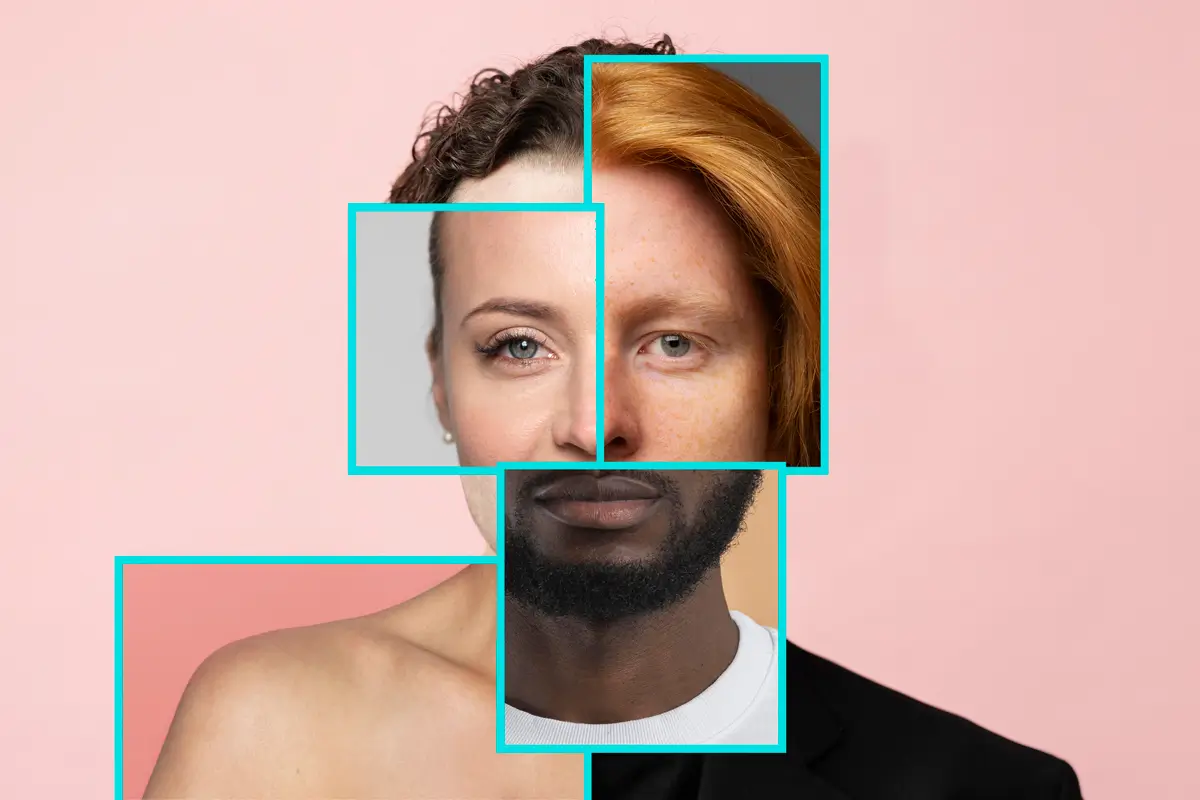
Composite Image sounds like a simple process to combine a few images only, but there is more to do! This section of the blog will guide you on creating composite images. I will show you creating composite Images step by step, from planning to executing using software and apps on your device, like a desktop or phone. So, let’s start learning-
Step 1- Sketch the Idea:
The first step is to develop the idea and write down the required elements in a note. In this step, consider the props, hues, location, and story to save time for shooting or editing. Then sketching the idea will make the design process easier and more fruitful.
Step 2- Keep Proper Tools:
If you want to capture photo elements separately and combine them accordingly, ensure proper equipment like a good camera, tripod, lens etc. Moreover, you should have access to the correct software programs or apps like Photoshop and Lightroom to execute the composite process.
Step 3- Shoot:
Once you have a clear idea of your imagination and the proper equipment, you can shoot the elements within 20 to 30 minutes. I always prefer capturing raw images since it preserves maximum image data, which is essential for editing.
Step 4- Composite Image:
This is the most significant time-consuming step for the image composite game. If you follow the step-by-step guide, you can save time in this step. Since you already have the essential element, you should choose the main frame for the final Image. Then follow any of the following methods at your convenience:
A) Composite Image Using Photoshop: Photoshop has changed the digital world and Composite Image dramatically. Here are the steps you need to follow to create Composite Image using Photoshop:
- Select image elements and open them separately in Photoshop accordingly. Make sure each image contains similar lighting and pixel counts to result seamlessly. First, open the background image.
- Now drag the image of the next element and cut out the subject using the Quick Selection Tool.
- Drag the quick selection around the element you want to keep or click on ‘select subject.’ To undo the selection, hold Alt/Option key while selecting the area to undo the selection. Press Q to see the selection and repress Q to return to the previous mode.
- Invert the subject by holding Cmd/Ctrl+Shift+I.
- Refine the edge by selecting ‘Select and Mask.’ Checkmark the ‘Show Edge’ box and Select a view mode from the right-side property panel that looks best for the subject. Adjust the Opacity and radius until you notice a pleasing edge. Uncheck the ‘Show Edge’ now.
- Change the output to “New Layer with Layer Mask” from the output setting and click Ok.
- Move the layer to position correctly and adjust the size accordingly.
- Repeat the process if you need more elements from other pictures. You can also add more elements; for example, to stylize the view, you can add a lens flare, snow or any other things to make it look more realistic.
- Let’s add a lens flare behind the subject. Create a new layer. Holding Alter/Option key, click on the new layer icon from the layer panel, and a dialogue box will appear. Change the blend mode from Normal to Lighten mode and check mark the ‘Fill with Black (Neutral Color)’ box. Click Ok.
- Now go to the Filter, select Render and click on Lens Flare- Filter>Render> Lens Flare.
- Change the Lens Flare to 105mm and brightness to 80. Click Ok to notice the change.
- Drag the layer to move and place it accordingly. If needed, adjust the Opacity.
- Now it’s time to combine our compositions to make it look like a single piece. Press Shift+Cmd+Option+E on Mac and Shift+Ctrl+Alt+E on Windows to merge the layers of the elements.
- Go to the Filter tab above and select Camera Raw to bring each image element into harmony with the composite image by adjusting color temperature, contrast, shadows, highlight vibrance, and saturation. Please note it will work in CC. To use it on other versions, save it as a TIFF file and open it in ACR from Bridge.
- Your picture is ready, and save your work on your device.
B) Composite Image Using Luminar Neo: Now, we will learn creating an image composite using Luminar Neo and how to blend the layer. The steps are fundamentally identical for two images with a background and subject.
- Open the background image in Luminar Neo.
- The layer panel will be visible on the left side by clicking the Edit button.
- To add another image in a new layer, click on plus (+) icon. You can also add an image from ‘My Image’.
- Resize the photo using the four points of the new image.
- Change the opacity to 100 to visualize the image entirely.
- Remove unnecessary things from the image keeping the required element by clicking on ‘Mask’ under ‘Layer Properties’.
- Open the mask by clicking on the three dots beside the Paint Mask.
- Clicking on the ‘Erase’ tool, adjust the brush size and brush up all over the image except the subject. While erasing around the subject, utilize the mouse whirl to zoom in and out for proper view.
- Use Softness and Strength sliders from the right panel to adjust the brush flow while erasing around the subject. It’s a time-consuming process, but more time input can result in more realistic results.
- Fix light and color differences between both layers and merge them to look good.
- Enable editing by clicking on the top layer. Adjust the brightness using sliders for Exposure, Highlight, and Smart Contrast from the ‘Develop’ menu.
- To match the brightness with the background layer, adjust the color and HSL.
- Activate the background image by clicking on the bottom layer.
- Check closely to see any halo around the subject for imperfect masking. Implement the Relight AI, Sunrays, and Dramatic menu to handle imperfect masking issues.
- There is a Mood menu to change the picture’s mood completely. Under the Mood menu, there are more options like Genius and Mystical sliders to bring harmony to your image. Implement them accordingly and blend the layers.
- The result is ready, but you can go far to edit. How far you love to edit depends on you but pay attention to blending the layers to look natural.
Helpful Link: You can learn Way to Outsource Graphic Design if you need.
C) Composite Image Using Apps: Don’t feel upset if you find creating composite images complex using the software. You can create different styles of composite images using your phone easily. All you need is the image to composite, a mobile phone and a free app for iOS or Android. PicsArt and PhotoDirector, YouCam Perfect, and Juxtaposer are apps you can use to create Composite Images. I am showing steps for PicsArt, but remember their steps are almost the same as below:
- Open the app on your phone, and from ”Add photo,” add a background image.
- Select the “Cut Out” option from the beneath to cut the unwanted portion. Resize the image by dragging the layer’s corners and clicking ‘Apply’ once satisfied with the cutout size.
- Go to the Effect (fx) option and select Lens Blur from the Blur option.
- Now use the Eraser from the above and erase the portion you want to keep safe from being blurred. Then click ‘Apply’.
- Go to the bottom menu for ‘Lens Flares’ if you want to add any impact on light. You can also change the opacity.
- You can use the ‘Add Sticker’ option from the bottom to add more elements.
- Adjust brightness, contrast, hue, and shadow based on need.
- Finally, you have created a Composite Image. Is it tough? Save it on the device and create more if you want.
Creative Ideas for Composite Image

So far, reading the blog, you have learned how to composite images, but still, you might need some inspirational ideas to enhance your creativity. Here are a few excellent composite photography ideas for you:
#1. Duplicate Subject: Want to add a surreal vibe to your photos? You can multiply the subject (person); that is a super easy effect. Such photos often show motion or steps of activities like gym or sports. Set the camera in the same position and take a series of shots of the subject in different poses. You can portray yourself too. Ensure the subject interacts with the scenery for each shot. Once shots are ready, you can load them into software or app to composite.
#2. Double Exposure: In the past, double exposure was the only way to composite images where the photographer exposed the same film twice to create two shots in one. However, at present, a photographer avails far more options through Photoshop. They use ‘Layer Mask’ to overlay images and then adjust the transparency of each photo.
#3. Outer Space Explore: Do you dream of exploring the Universe’s glory with stars and galaxies? You might not be able to achieve the dream physically, but with the help of a composite image, you can generate such an image exploring outer space. You only need photos of you and the Universe. Try to make it simple by using two or three photos.
#4. Visualize Imagination: Composite image limits destinations for your imagination. The artist can show power over the surroundings by creating juxtaposed scenes with composite images of the moon melting on Earth or simultaneously having day and night. If you put a subject, ensure it interacts with the surreal environment.
#5. Blend Multiple Landscapes: Landscape photography shows us wonderful locations. Blending multiple landscape photos can create an incredible composite image that will take the viewers to a new surreal world.
#6. Tell A Story: A picture tells the story, and a composite image can convey the full story amazingly. You can mix pictures with storytelling techniques to visualize a story. The subject of strong composition will lead the viewers’ eye to the tale.
Tips for Creating Composite Images Successfully
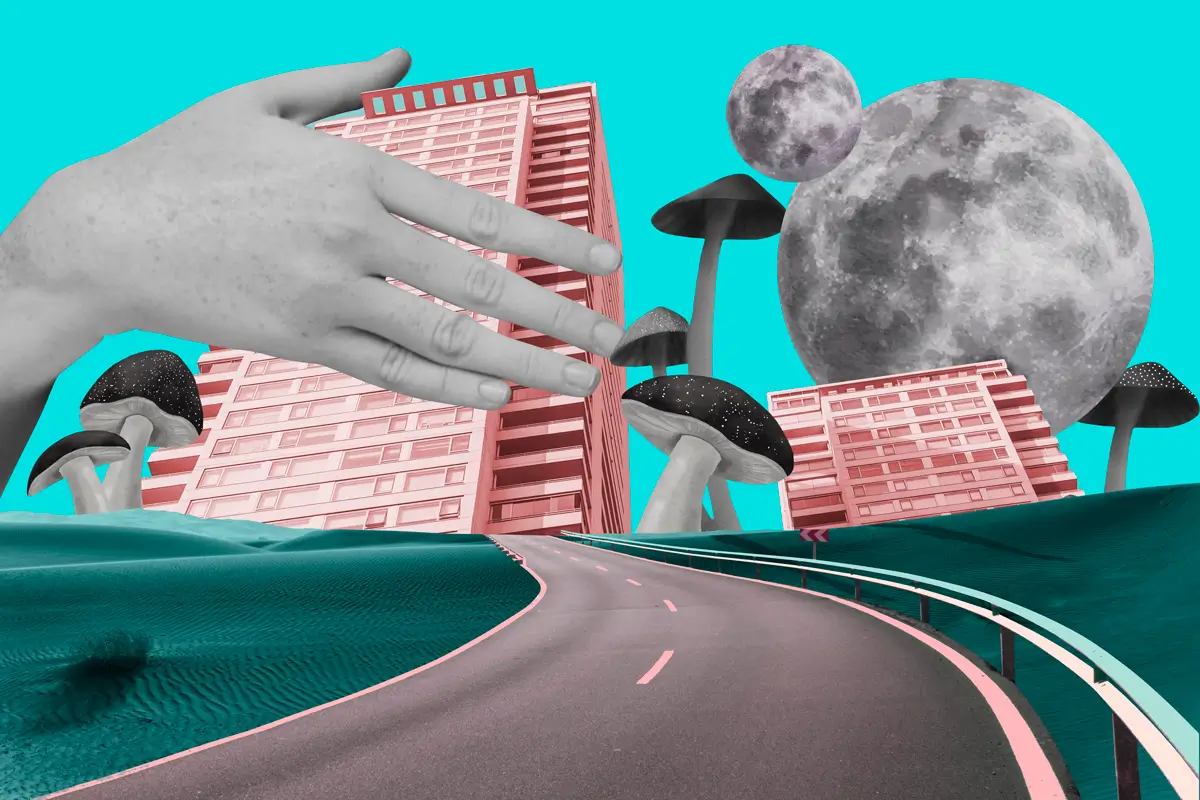
A composite Image is the combination of several images based on imagination. Using different techniques, you can create stunning photos with different effects. Implementing tips can make the method easy and fruitful. Here are some effective tips for you:
#1. Practice: People rarely achieve the best result at the first trial. Practice makes the man perfect to do the work flawlessly. Magic Wand or Pen tools are the easiest way to composite images in Photoshop, but even it needs more techniques to fine-tune the result. As a novice, you should play with different tools of Photoshop and try different effects. Practicing can help you create composite images incredibly.
#2. Sketch Design: Sketching is an integral part of a composite image that helps you anticipate the image. You might dream of creating a surreal photo, and without sketching, you can’t visualize it accurately. So, brainstorm your idea and stay on track by sketching with a pencil, paper or tablet.
#3. Maintain Consistency: While capturing photos to composite, you must keep them consistent. If you do the studio shot, ensure a similar quantity of lighting comes from the same direction. In the case of outdoor shooting, think of when the sun remains in a position to illuminate your elements evenly. Though you can fix the lighting and other issues by employing an image post-production service, you should maintain accuracy as much as possible to save time.
#4. Take Artwork Inspiration: One of the effective tips for a composite image creation idea is to train yourself on maintaining color, light and texture to make a surreal photo. Study famous artwork, such as Dutch Golden Age paintings, which will make you wonder why they are so appealing. Taking inspiration from various artists like Man Ray, Salvador Dalí, or Erik Johansson will help you brainstorm ideas to execute in the future. Maintain a diary or folder to collect inspiration and save your sketches.
#5. Use Tripod: If you capture multiple shots of the same scene but slightly differently, you must ensure using a tripod. Different positions for the same picture might not make it look believable and create issues while editing. Hence, use the camera on a tripod. Moreover, using a tripod will help you protect images from unwanted shaking.
#6. Match Elements: While selecting elements for your composite image, you should keep an eye on matching the elements with the photo theme. Moreover, all the elements must contain relatively similar lighting and texture. If needed, take your time to match the elements from different sources. Once you match the elements accurately will save half of your editing time and make the photo more appealing.
The Pros and Cons of Composite Image.
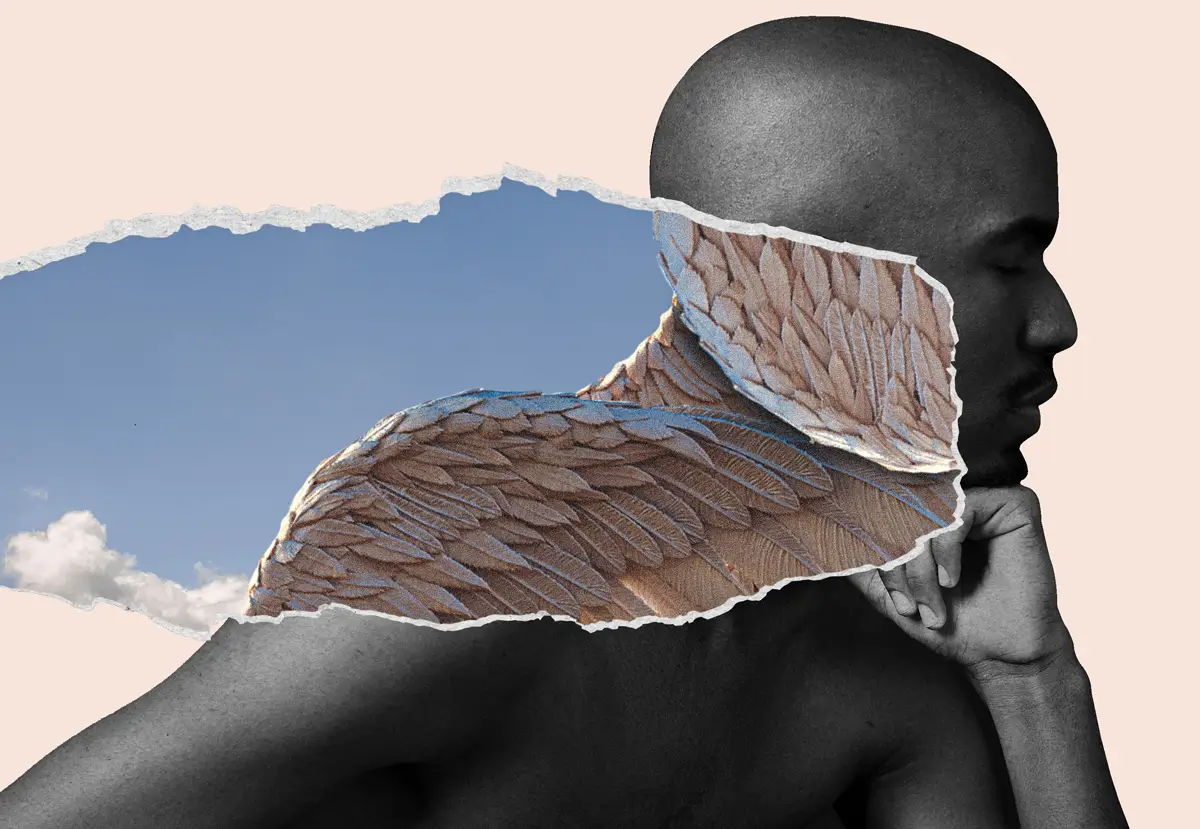
The composite images are not real but contain fake elements to visualize imagination. So there remain a few pros and cons regarding using composite images. Before you start creating and using composite images, you should know them. Let’s check out the pros and cons of composite images:
A) Pros:
Here is a glimpse of the pros of using Composite Images-
- Grab Attention: Composite images capture attention like saying- “Excuse me.”
- Contact Message: A picture worth a thousand words. Hence, a composite image contacts the audience, whatever the message it conveys.
- Promote Business: Businesses running marketing campaigns can utilize composite photos for business promotion since they can add any element to convey the business idea.
- Saves Money: Shooting outdoors or in different locations is costly since it is related to the charge of the hotel, food, travel and other things. But if you know how to composite images, you can shoot anywhere in a room, studio or garage and composite image. Moreover, in another project, you can use the same picture on different backgrounds or the same picture of different poses.
- Freedom to Creativity: Creating Composite Images allows photographers to capture photos with flexibility and composite images with creativity. It allows the artist to be creative by setting picture elements in a location where none can ever travel or create a place that doesn’t exist in reality.
B) Cons:
Here is a glimpse of the cons of using Composite Images-
- Time-Consuming: One of the biggest cons of doing composite images is that it is time-consuming. The artist must search for picture elements individually if he didn’t capture them. After that, the artist masks and edits individual elements, often taking a day to composite.
- Debatable: Composite image requires merging multiple images, which initiates a step into copyright violation’s legal parts. Therefore, there is a risk of violating certain laws by inexperienced artists. Moreover, such photos are not suitable for any art competition.
- Wrong messages: Since multiple image elements are used, an artist might merge elements to generate a cross message and mislead the audience.
- Quality Issue: Creating composite images requires patience and skill that a novice artist might lack. Consequently, if marketers use the composite image created by novices, it might create a bad impression on the customer.
Why Operate Composite Images?
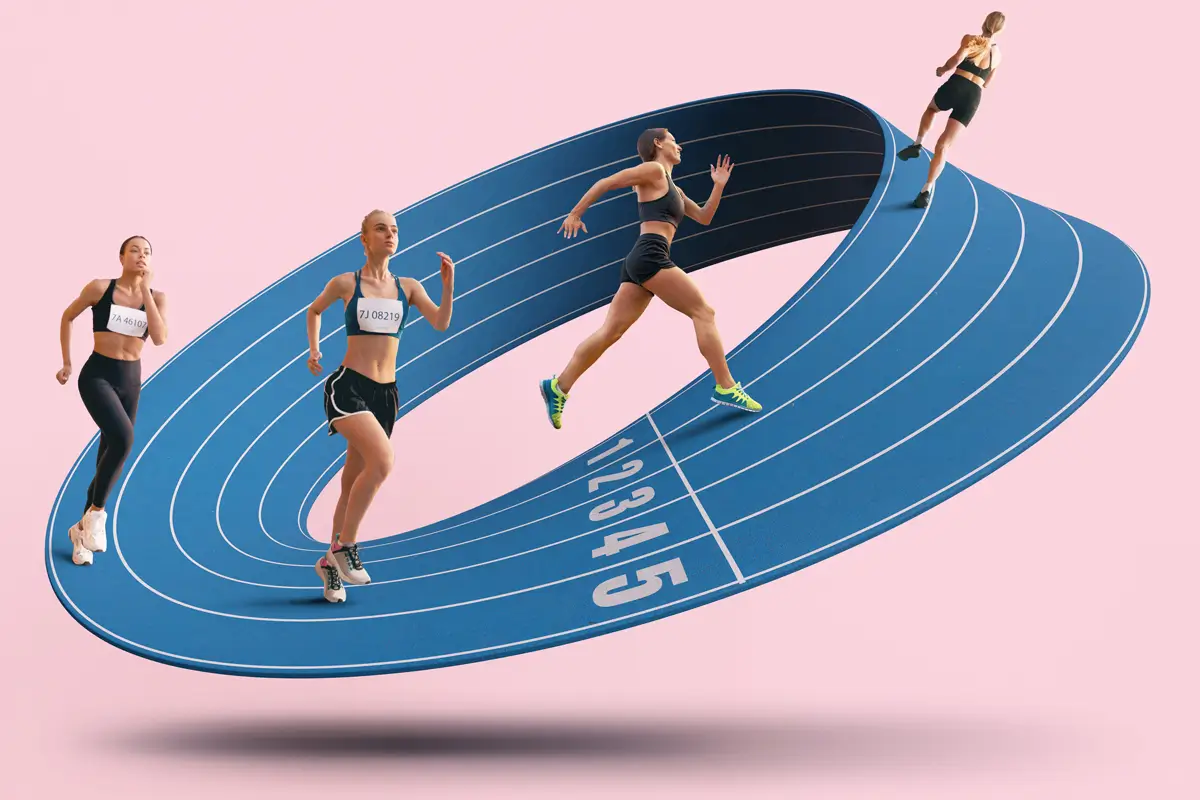
Composite images redefined the digital photography world. It has reduced the cost and toils of capturing photos in different locations, especially in a landscape where none can go or doesn’t exist in reality. It comes with several benefits that become the reason to operate composite images. Let’s know the reason with benefit:
- Reduce Cost and Toils: The composite image combines multiple landscapes and cityscape shots to make an incredible but technically unattainable photo. Moreover, It has reduced the cost and toils of capturing photos in different locations.
- Articulate Visual Content: Composite images are very compelling. If you want to articulate your visual content competently, you can operate the composite image for your blog, articles, product promotion or art project.
- Juxtapose: The composite image often generates a photo that juxtaposes objects or living creatures which is difficult to capture candidly.
- Profitable: Composite photos are incredibly appealing to the audience and profitable for the photo editing service providers like Cut Out Image since the techniques go through several complicated steps. Professionals can bring the best result with a real-like vibe.
- Improve Engagement: Uploading funny, stunning, and creative composite images in social media posts can increase audience engagement.
- Visual Branding: Business advertisements and marketing campaigns can use composite images for their business, visual branding or product promotion, which will attract customers.
- Hook Viewers: You get 3 to 5 seconds to catch website visitors’ attention, and high-quality photos are the most effective tool to keep viewers on the page. Well-generated high-quality photos connect visitors with engaging aesthetic charm.
Closing Statement
Composite photography provides artists the freedom to spread their creative wings. Consequently, they have the power to create surreal photos by blending images with stunning effects that are physically unattainable.
Hopefully, after reading the blog, anyone can composite images, but the difference will remain in quality. A professional artist can composite dreamlike images skillfully, whereas a novice might need more knowledge and practice. So, as a beginner, keep practicing and bring life to your dream with composite images.
Did you find the blog helpful? Let us know in the comment box. You can also check out my other blogs if you find them interesting-
- Insurance for Photographers
- How to Use ChatGPT for Graphic Design
- Best Artificial Intelligence (AI) For Graphic Design
